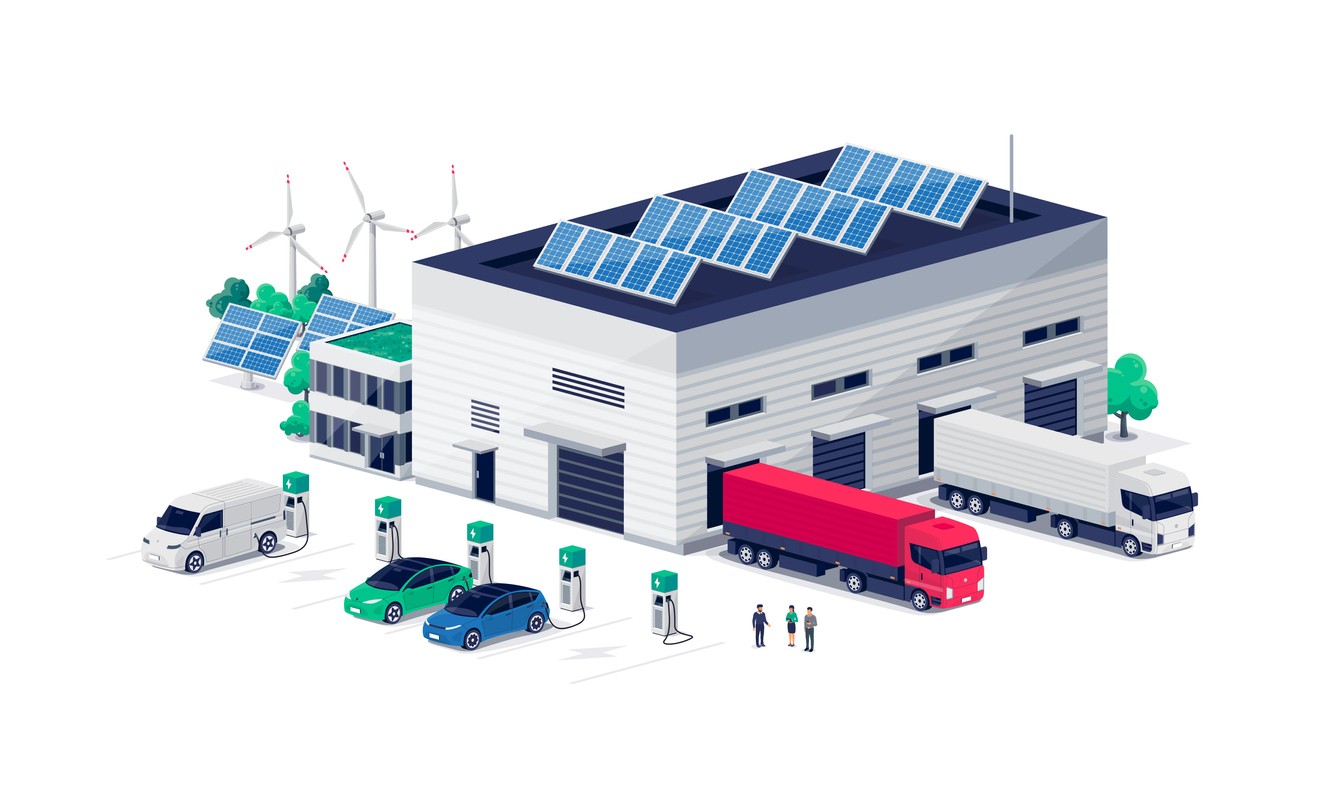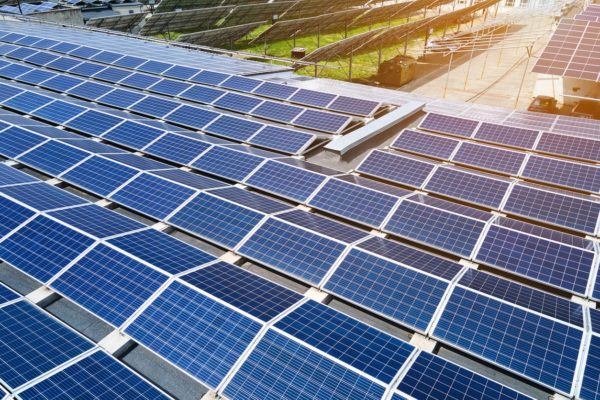
Warehouse emissions are drastically increasing over the years. Warehouses emit a significant amount of pollutants. Diesel, for example, is necessary to power conveyor machines and other equipment employees use to load and unload the freight.
This, along with a huge number of trucks and forklifts emitting harmful gases, results in a functional area and facility that contributes considerably to greenhouse gas levels with gases such as carbon dioxide and nitrogen.
The South Coast Air Quality Management District (AQMD) has established the WAIRE Program to help mitigate the effects of greenhouse gases. It enforces a menu-based point system to encourage warehouse owners and supervisors to avoid environmentally harmful behaviors.
A WAIRE initiative seeks to particularly manage industrial equipment that is more ecologically sound than its oil and gasoline-powered alternatives.
Dangers of Warehouse Emissions
Warehouse gases are bad for the environment because they build up in the atmosphere and harm the Earth’s ozone layer. This layer covers the Earth and prevents the sun’s damaging UV radiation from reaching the planet’s surface. When the ozone layer is disrupted, it allows for global warming, which causes ice-capped mountains to melt, resulting in severe flooding and other catastrophic events.
Shipping enterprises have significantly increased due to the surge in e-commerce during the outbreak. Due to these tremendous earnings and growths, the environment is suffering. But regulations and programs such as the WAIRE Program have been developed to address this concerning reality. Local communities and individuals may struggle as the quantity of warehouses grows if managers and owners do not implement healthier and cheaper operations.
The WAIRE Program allows warehouse owners and operators to switch from carbon-emitting options to greener and more environmentally friendly alternatives. These include ecologically friendly equipment and electric vehicles that do not use fossil fuels. The pandemic has illustrated the risks of inadequate storage rules and safety safeguards.
Without effective control, regional warehouse locations have failed to meet the minimum federal air criteria for the past 30 years. The introduction of the WAIRE Program has given the surrounding communities reason to be optimistic. It permits warehouse managers and investors to seek out technology that keeps them away from polluting routines.
Authorities must enforce this order so that warehouse operators may make the necessary changes without trouble. The South Coast Air Quality Management District has substantial jurisdiction and duty in the regulation’s mandate to transition to cleaner solutions.
Nitric-Oxide and Its Impact
Nitrogen pollution causes the formation of particulate matter, which is a significant component of air quality and smog. The amount of particle matter in the air is significantly greater than the World Health Organization’s suggested dosage threshold.
The detrimental health impacts of air pollution are highly costly. In water bodies with nitrogen pollution, algae and vegetation develop unnaturally. In response to these enormous growths, bodies of water confront dead zones or areas of the ocean that do not support any aquatic life. Water quality and marine life cannot flourish in this environment.
Over 880 coastal dead spots have been identified globally, and the number is growing. The WAIRE resolution and other organizational steps are the only way to deal with these concerns on a large scale. Nitrogen discharges can also lead to soil contamination by increasing soil acidity and harming the soil’s microbiological constituents.
These microorganisms give the soil the ability to sustain life. It is generally understood that an increase in atmospheric nitrogen may harm species in both aquatic and terrestrial environments. This is due to nitrogen-using plants’ proclivity to engulf and overpower other plant species. Nitric oxide, like carbon dioxide, is a potent greenhouse gas responsible for global warming.
This gas also harms the ozone layer, protecting Earth’s life from harmful UV radiation from the sun. The logistics business can reduce nitrogen pollution owing to rules and regulations such as the WAIRE Program, enabling individuals to breathe better and improving the environment in the long run.
The WAIRE Program Promotes a Shift to E-Trucks
A switch to electric trucks will significantly decrease energy expenditures and the overall cost of ownership. This is because diesel fuel is substantially more expensive per kilometer in many markets than commercial power. It also implies that even huge batteries will rapidly be cost-efficient.
The most economical use for electric vehicles is in transporting heavy products. The data shows that electric trucks can provide a higher overall decrease in energy expenditures the bigger the payload and the more intensely they are operated.
Additionally, electric trucks wouldn’t pollute as they passed through towns. Local air pollution from diesel vehicles can disproportionately harm underprivileged communities. Additionally, if electric vehicles were powered by renewable energy, especially solar energy, at their peak output, they may eventually become carbon neutral.
Push to Renewable Energy
Over time, the conventional warehouse has changed. Sustainability has swept in and has become the main emphasis for all businesses. Sustainability in warehouses increases over time when changes are implemented gradually, such as the move to renewable energy. For energy and resource usage enhancement in greener ways, additional improvements are needed in the future.
The supply chain may also be improved indirectly, even if using renewable power is among the essential measures that stores must undertake for the future. Technology, the environment, and public health are the main issues that should be prioritized. Afterward, warehouses might be made sustainable in every respect.
Industries were responsible for 22% of all greenhouse gas, according to a 2018 study from the Environmental Protection Agency (EPA). Warehouses and distribution networks undoubtedly play a part in transportation, which is why this proportion is second to none. The development of warehouse efficiency must seek to prevent this type of harm.
Equipment used in warehouses is wasteful and dangerous. Although greener, battery-powered options could ultimately appear, managers can choose a more direct route. You can monitor equipment performance and proactive maintenance using Internet of Things (IoT) sensors. The WAIRE Program allows warehouse owners and operators to think about sustainable alternatives.
Solar Power for Warehousing
Solar power in the warehousing industry and other commercial uses can be incredible. Clean energy from the sun is becoming a highly cost-effective way of generating electricity. Solar can be less expensive than burning fossil fuels for warehousing and supply chain operations. Regardless of being a cheap and cleaner alternative, it only produces 3 percent of the world’s power.
The price of solar has fallen drastically. Today, a person can pay about 20 cents for a watt of electricity when using solar. Therefore, with only an initial investment, warehouse owners and operators can reduce their carbon emissions and pollution significantly while saving tons of money. The WAIRE Program is a way they can realize this benefit and start taking actionable steps.
The modern-day solar cell is a US invention, but initially, this technology was highly-priced. However, the progression and invention of this technology allowed for a price drop. As countries like Germany and their laws to boost alternative energy sources, companies now had the incentive to shift to solar, as they could save money in their operations. With this high demand for solar, China grasped this opportunity, producing much cheaper solar cells.
Other Renewable Power Generation Options
In the near future, wind energy is predicted to surpass hydropower as the leading renewable power source in the nation. Hydropower produces energy by rotating a generator’s turbine blades with water—often fast-moving water in a wide river or water power thrust from a high point.
Mega-dams, often known as enormous hydropower facilities, are seen locally and internationally as nonrenewable energy sources. Mega-dams change and diminish natural flows, restricting access for animal and human populations that depend on such streams.
Because they only change a tiny fraction of the flow, well-maintained small hydroelectric plants with capacity additions under 40 megawatts usually cause minor environmental damage. This energy-producing equipment generates environmentally friendly power while saving massive electricity from the grid. However, hydroelectric power is a costly method of generating energy without the need for power infrastructure.
Switching back to wind generators makes little sense in light of recent technological advancements. The broad turbine blades rotate with high wind pressure to charge electric generators. You may utilize the generators to generate electricity later. However, many warehouse operations continue to rely on alternative energy generation technology.
Wind energy is one of the lowest-priced energy sources available in the United States, generating 9.2% of the country’s power. Wind turbines may be installed anywhere there are high winds, such as on mountaintops, coastal plains, or even in the open sea.
Commercial Solar Solutions for Warehouses
South Coast AQMD implemented the WAIRE Program to reduce nitrogen and other dangerous gases from warehouses in order to improve South Coast air quality. They established the WAIRE points system to incentivize warehouse owners and operators. Whenever warehouse facilities implement environmentally friendly solutions such as solar energy equipment or ecologically friendly cars, points are awarded.
Coldwell Solar offers solar energy solutions to warehouses to help them comply with WAIRE Program standards. We understand how the use of alternate energy-producing equipment minimizes nitrogen emissions, improves efficiency, and benefits companies. As a result, we recommend South California warehouses install solar-powered energy systems. Contact us today to get started on your commercial solar project!




